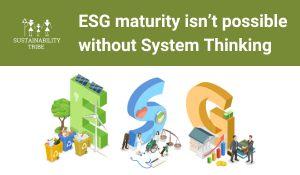Recently, I was invited to publish an article in the Bombay Stock Exchange Broker’s Forum Magazine. I couldn’t resist the urge to grab this opportunity to dive deeper and solve the new ESG challenges companies face today. This is the original article getting republished here to help businesses and boards of directors in our tribe!
The 2023 UN Climate Change Conference, COP 28, is just a few weeks away here in Dubai. Climate finance is one of the most crucial topics for this Conference of Parties. The world hopes countries will agree and accelerate bold climate action. The COP outcome is significant as, historically, it has ignited regulation and policy change and has a vast potential to drive decarbonization and solve the climate crisis.
With the focus on the global south in this COP, the business communities in Asia and the Middle East are wondering if it will result in a more significant regulatory push for them to accelerate ESG (environmental, social, and governance) maturity.
According to the Intergovernmental Panel on Climate Change- IPCC’s sixth assessment report, options are available now in every sector that can at least halve emissions by 2030. Then why are we not seeing bold actions in our industries yet? What is the missing piece in the puzzle of ESG maturity for a business?
Here are some relevant questions today’s C-suite executives and the board of directors are facing in the boardroom. In this article, we are going to discuss how a lack of system thinking and short-termism could become the biggest barriers for this boardroom in achieving its ambitious ESG commitments.
1. Is ESG an additional task?
When companies start their sustainability journey, the executive board usually treats ESG as an additional and external task, not as the sustainability transformation of the business lacking long-term vision and system thinking. Many executives at the board level still do not see ESG as a value-creation business case in the long run.
ESG generally comes into the picture if it’s enforced by regulatory requirements or due to stakeholder pressure (mainly investors). Then, the ESG becomes a bare minimum administrative, ticking-boxes activity. Entirely missing a significant opportunity to assess the business as a whole and explore risks and, more importantly, possibilities. Opportunities like new market penetration, operation costs, creating more revenue streams, opening new markets, and, most importantly, reducing the business’s current and future risks.
One of the most straightforward solutions is educating the board on ESG and building capacity at the top level. From my experience hosting C-suite workshops on ESG, I have seen how imperative leadership awareness building is. It translates into employing system thinking and building a long-term vision in the ESG tasks. It also helps the leadership to hire the right corporate sustainability executives and hand over responsibilities to capable hands. The ESG-aware board can help build a better sustainability culture within the organization. The most important learning for the board here is even if you hire a CSO-chief sustainability officer or create an ESG department, it’s an organization-wide activity, and ‘Governance’ in the ESG has much higher priority if you would like to reach KPIs for the rest of the two Environment and Social to meet regulatory requirements and keep your investors happy.
2. Should the focus be on the sustainability report only?
Most of the time, the whole focus behind ESG work is producing a sustainability report. But sadly, the groundwork for the sustainable transformation of business operations, practices, and models is nobody’s priority. Once the report is prepared, everyone is happy and ready to return to business-as-usual until the following year.
There is no denying that sustainability or ESG reporting is essential to address regulatory requirements of sustainability disclosures and transparently communicate to stakeholders (mainly investors) on the sustainability KPI performance. However, this misplaced focus on only the report creates a culture of sidelining ESG for the rest of the year and prioritizing it only when approaching the next reporting cycle. ESG practitioners are familiar with the scenario of companies waking up at the last minute and creating isolated sustainability programs to show improvements over last year’s ESG metrics. Most of these “report-focused” sustainability efforts are either one-off or isolated. It means they are not organization-wide efforts. They look like CSR efforts, charitable initiatives, employee engagement drives, etc. So, when we look at the organization as a whole system level, these efforts do not fit in the picture, or they are not regular, relevant, or widely spread to reap the benefits.
Sometimes, organizations also create ESG initiatives as a reaction to some environmental or social events, which may include reactive efforts to stop a boycott of a brand. This indicates that an organization lacks a long-term and system-thinking approach to its ESG. For them, ESG comes as an afterthought; they do not have a system to predict risks in advance. But it’s natural to face such a situation when ESG reporting is prioritized over ESG execution. This short-termism deviates an organization from the necessary long-term, step-by-step ESG improvement that can create value for its internal and external stakeholders.
The solution to this problem is to shift the ESG focus from reporting to implementation. Organizations must keep ESG execution priority alive throughout the year to improve their sustainability KPIs in reality, not just in the beautifully crafted sustainability reports. Organizations could find passive, low-cost solutions to some of their ESG issues if the focus is on implementation. To solve ESG issues, we don’t necessarily always need to invest in high-cost technologies and innovations. Sometimes, creative and out-of-the-box thinking of employees could significantly improve sustainability KPIs.
When I work with my clients, I like to give them a path forward through sustainability action plans, including SMART goals and accountability. (Specific, Measurable, Achievable, Relevant, and Time-Bound Goals)
3. Where does ESG fit into the business structure?
If we look at planet-level ESG advancements, Asia-Pacific and even the Middle East markets are still gearing up to this new challenge. Aon’s latest Asia Pacific Corporate Governance and ESG Survey showed that only 29% include ESG-related goals and KPIs for their C-suite, with most companies in Asia Pacific still in the early stages of using ESG metrics and developing their ESG profile.
So, it is no surprise that many companies and their C-suite wonder where to fit in new ESG roles in their existing company structure. And guess what? The lack of system thinking affects this decision, too. To the “report-focused” board, it makes sense to accommodate ESG in their marketing and communications departments. Some even ask their existing marketing and communications executives to upskill (mostly with some online executive short courses) and delegate the responsibilities to them. Such companies immediately start mobilizing their resources and assigning “ESG funds” towards sustainability-focused events, marketing, and branding initiatives, at a huge risk of “Greenwashing.” These companies do not use their resources for systematic ESG implementation. They later complain that sustainability and ESG cost a lot without significantly changing their ‘business-as-usual.”
Another favorite but ineffective place for ESG is within the Quality, Health, Safety, and Environment department, even though there is Environment. Because QHSE has a limited scope in the Environment, the focus is more on quality assurance, staff wellness, and safety. However, unfortunately, the reach and capabilities of the HSE department in most companies aren’t adequate to convince the board to take bold actions and facilitate them.
Having said that, ESG requires the help of both the Marketing and Communication and QHSE departments. Not just that; to meet ESG metrics, every department should be involved, and every employee has a role to play. ESG is that kind of broad topic; this is precisely what system thinking looks like. When an organization starts its ESG journey, it needs to create a sustainability culture and raise awareness within the company so that everyone gets on board with new changes and ESG progress. The organization also needs to upskill its crucial staff, ideally in every department, to assist the ESG executive or department. Down the line, businesses need to create sustainability champions at every department and every level to empower their human capital.
But to resolve the issue of where to place ESG, the C-suit and Human Resource departments first need to understand what ESG means, what the responsibilities of this new role will be, and what skill sets and capabilities the candidate needs to have. And I’m saying this from my own experience.
Interestingly, 15 years ago, when I was hired as a ‘sustainability engineer’ for a green building project, the organization’s leadership and HR team didn’t know my job responsibilities. I had to write my job profile when I got hired. Thankfully, now many more resources are available for one to get educated.
Before concluding, I’ll highlight the definition of system thinking from Wikipedia. ‘Systems thinking is a way of making sense of the world’s complexity by looking at it in terms of wholes and relationships rather than splitting it into parts. It has been used to explore and develop effective action in complex contexts, enabling systems change.’
Isn’t system change the primary purpose of ESG? ESG is a pathway for our businesses to prepare for the new green and circular economy where the world is moving. When tackling corporate ESG, we must remember that the final goal should be the sustainability transformation of the business, where natural and human capital are nurtured. That is the only path forward if companies want to survive and thrive in the coming decades.

